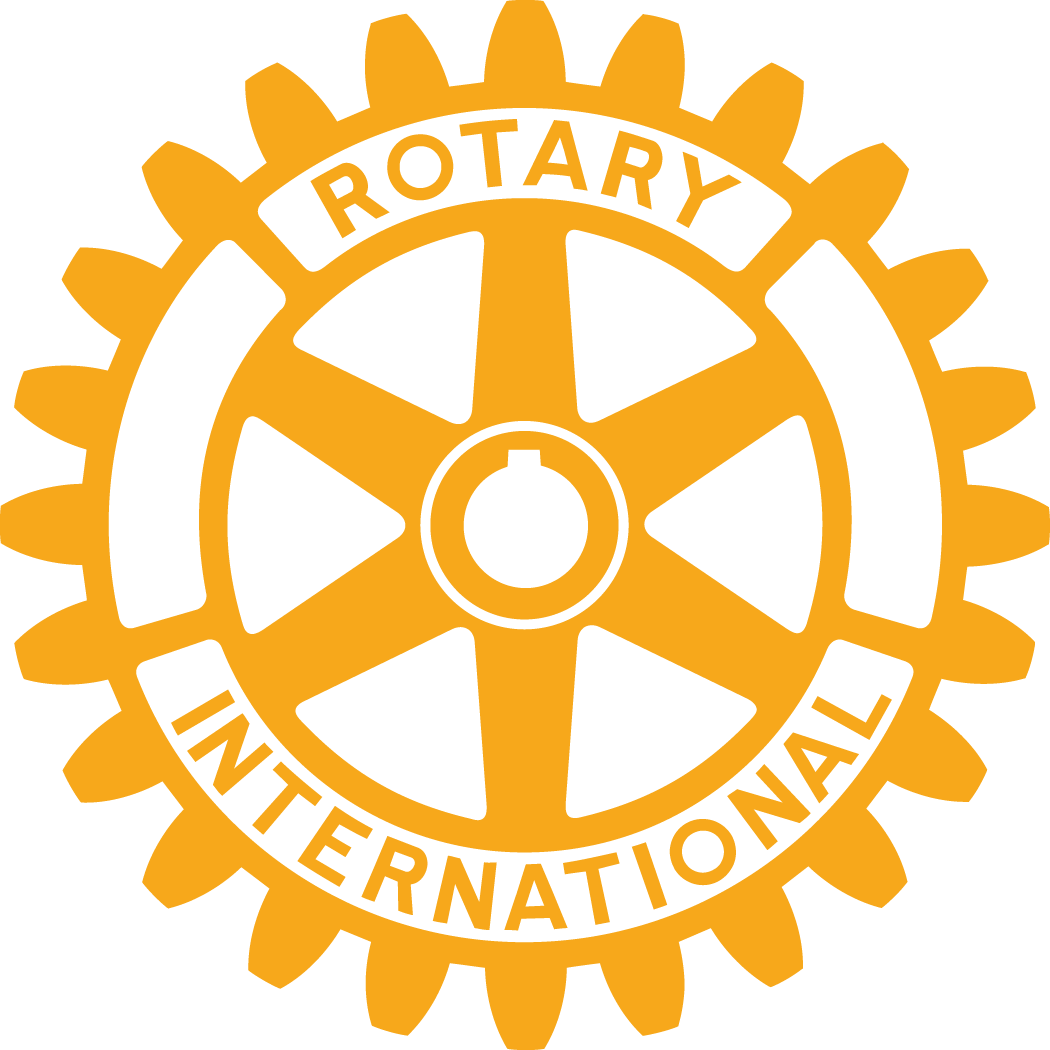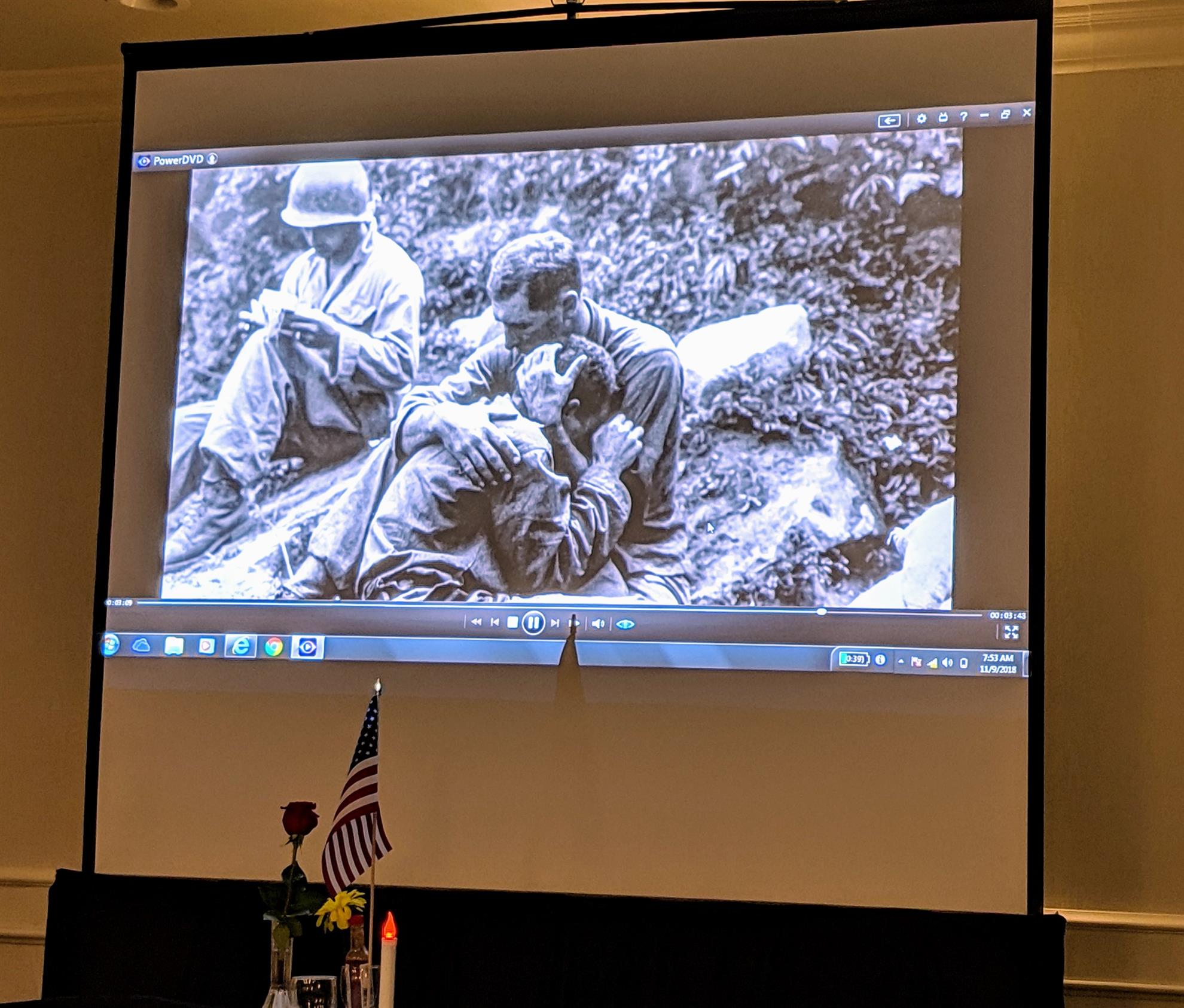
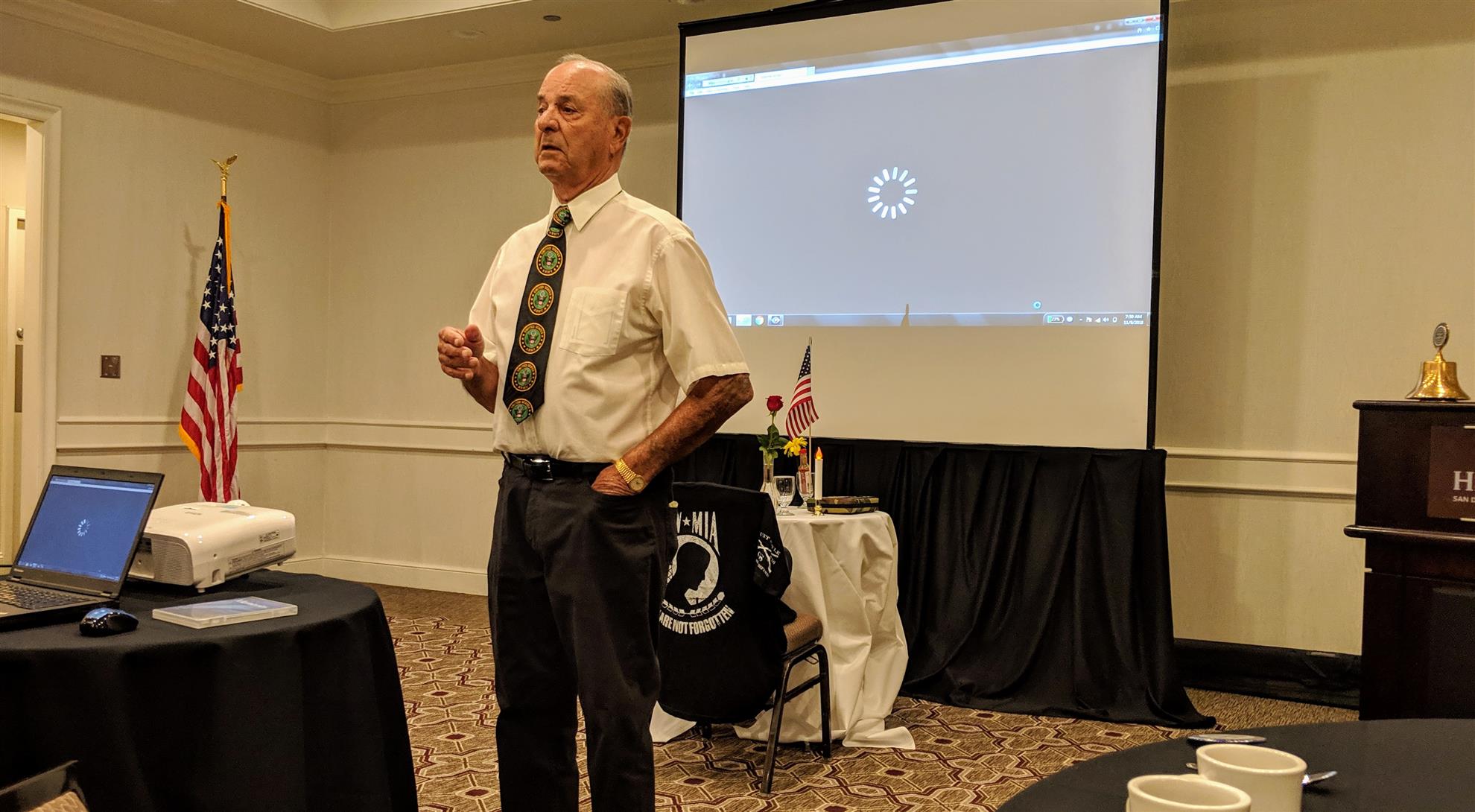
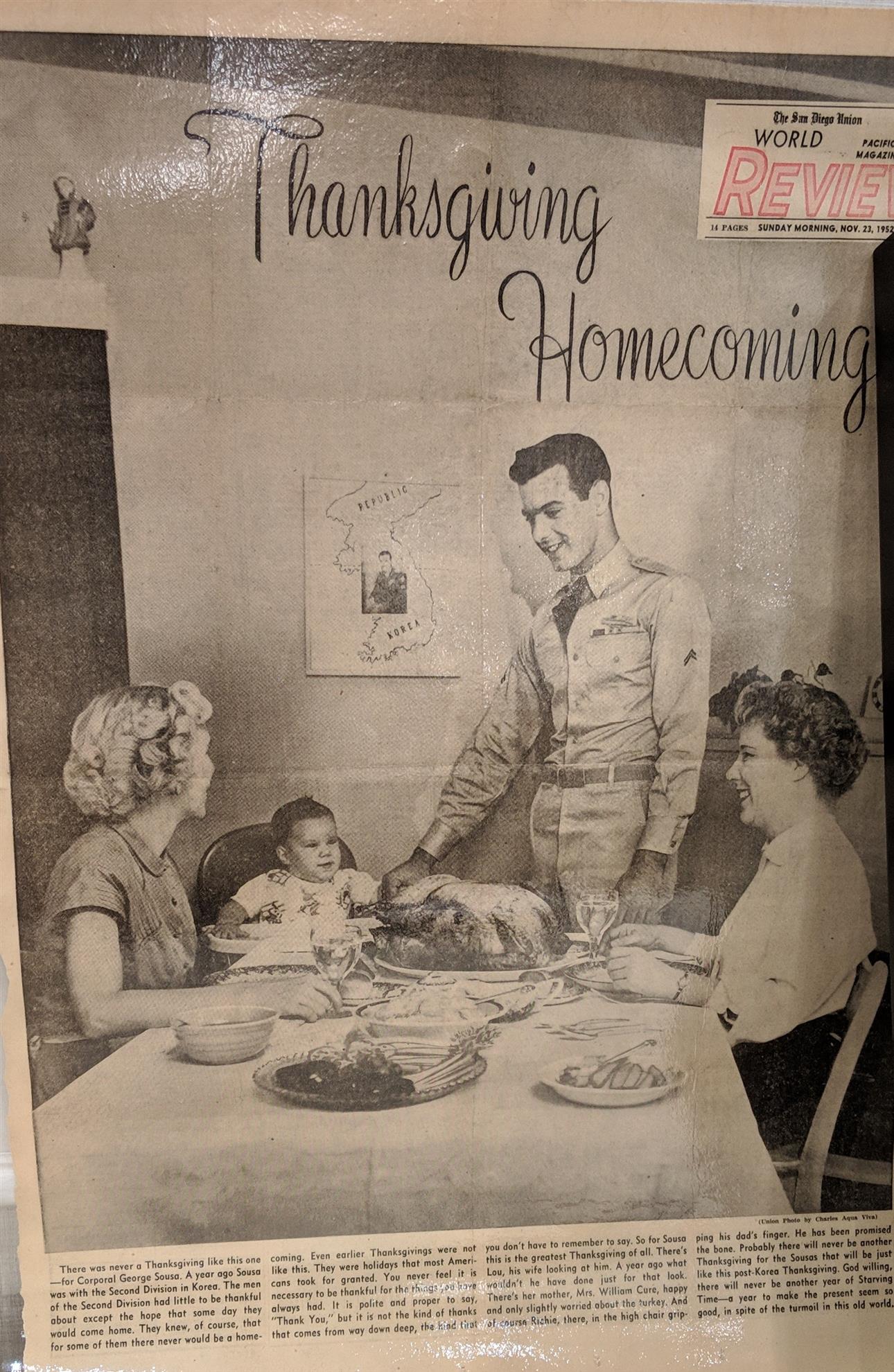

We had a wonderful program by George Sousa honoring all the veterans in our club and all over the USA. He started off with a nice video about vets from the Korean war. He indicated that almost 8,100 are still Missing In Action (MIAs), about 3000 bodies returned, and 51% died in prison. He had some of his memorable photos and medals laid out on the table.
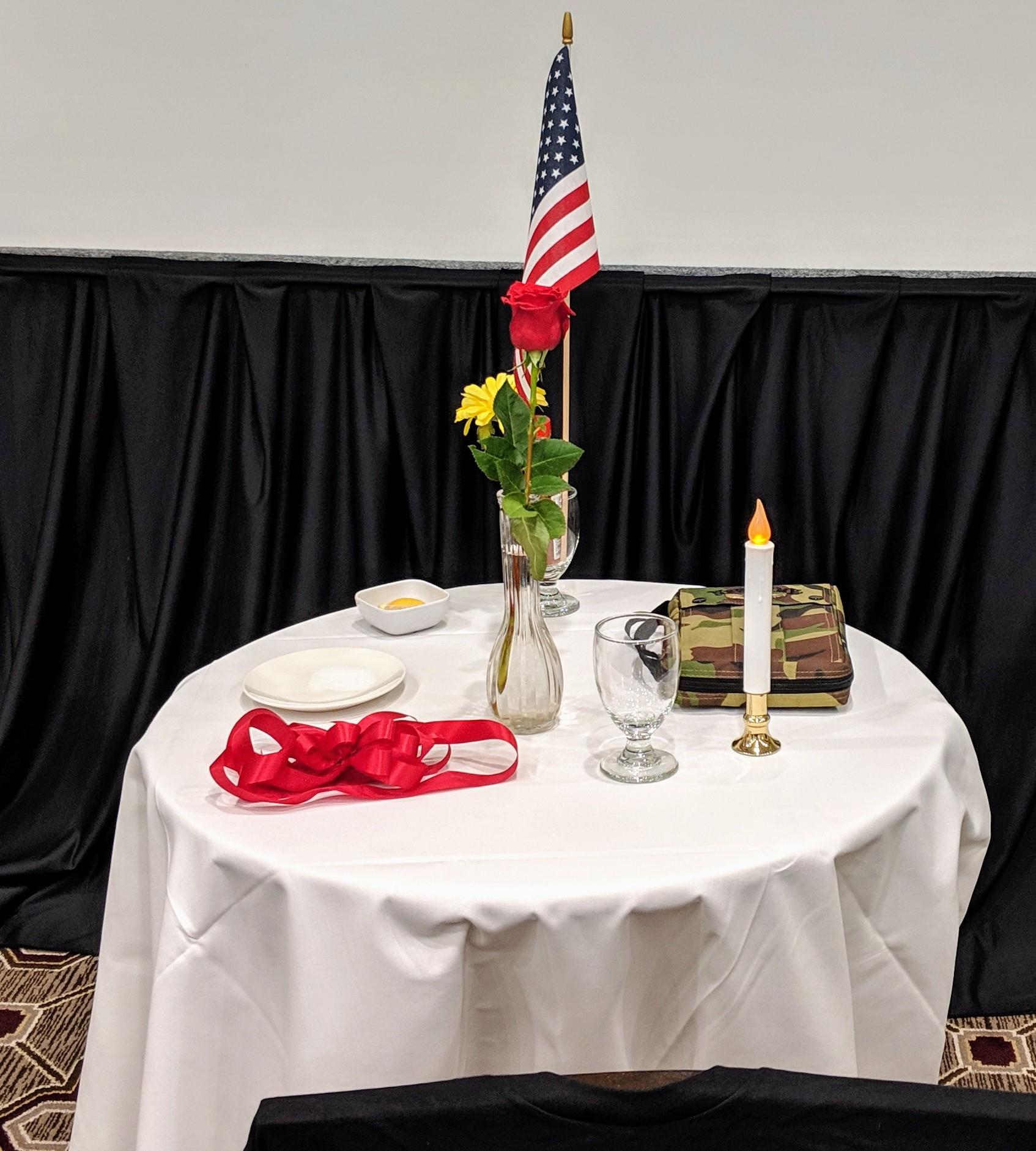
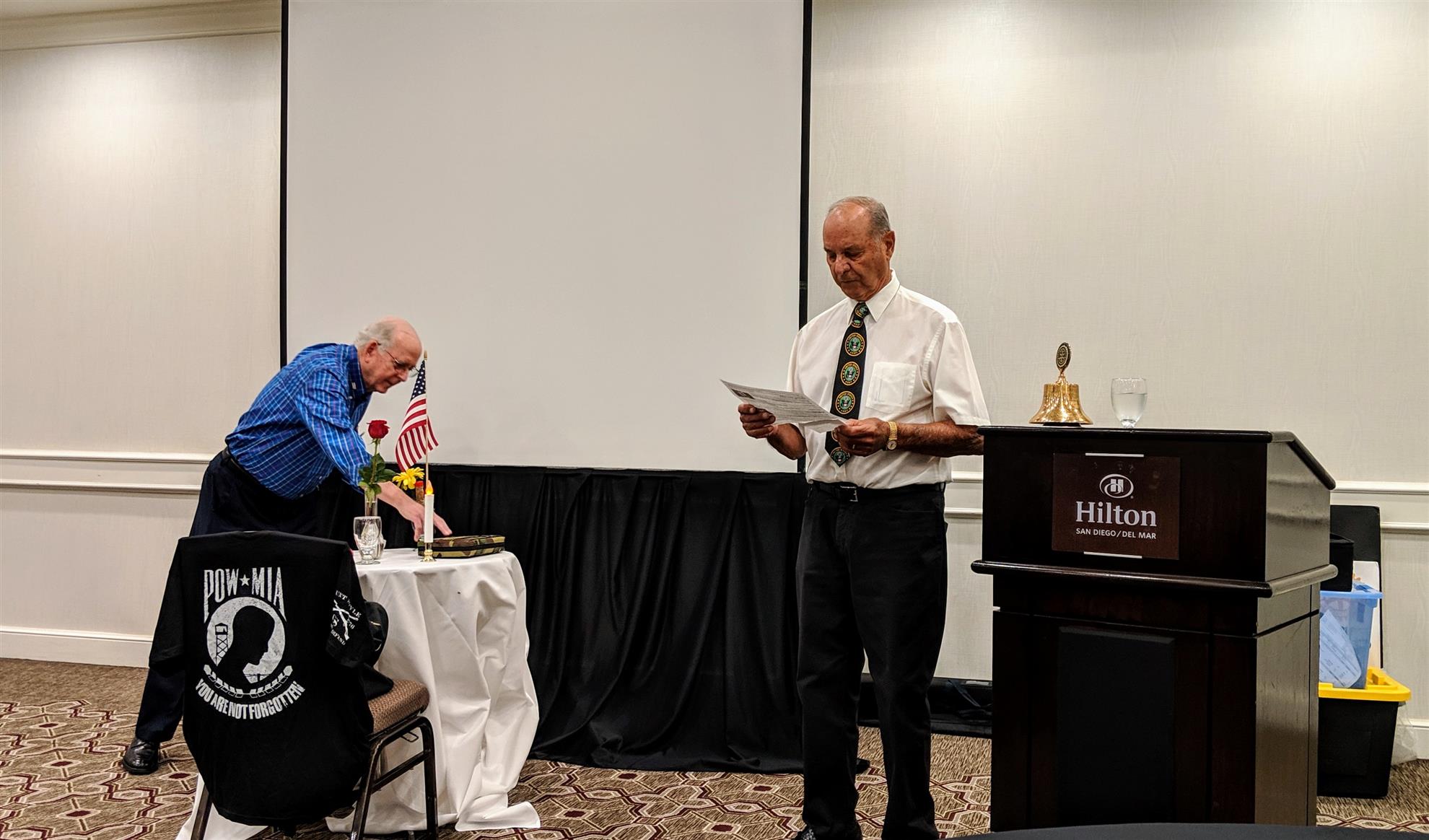
He had a round table set up with various items that signifies important aspects of the Korean war. This table is known as the POW/MIA table. The details of the table layout can be viewed at the U.S. NAVY LIVE BLOG site. Charles helped George point out each item on the table as George read it out. We had a room full of guests and all the vets had some form of military dress and/or cap. A brief video of George's talk can be seen by clicking here.

Each of our club veterans gave a quick update about their time in the military and they had some displays of pictures, medals laid out on the tables along the wall.
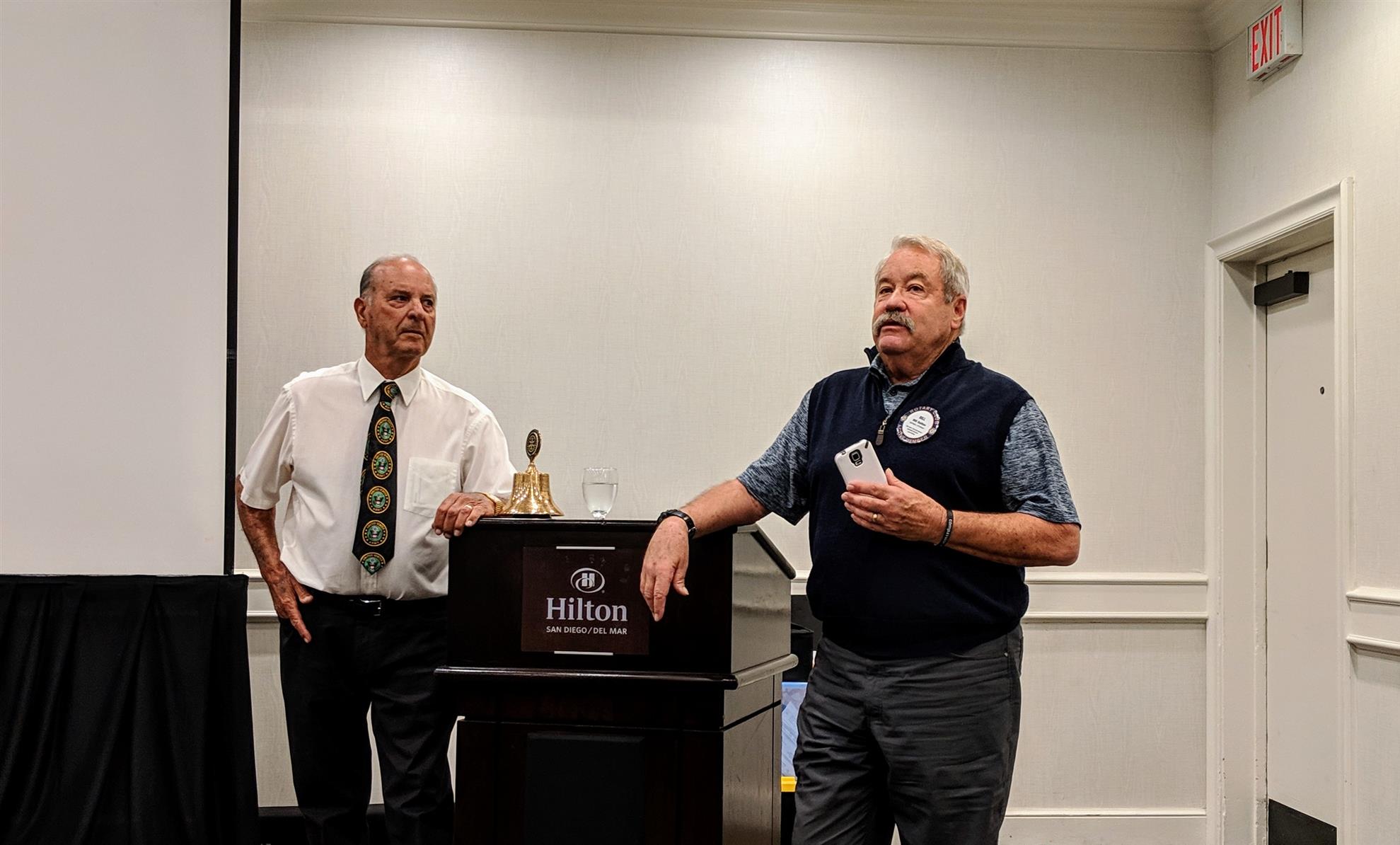
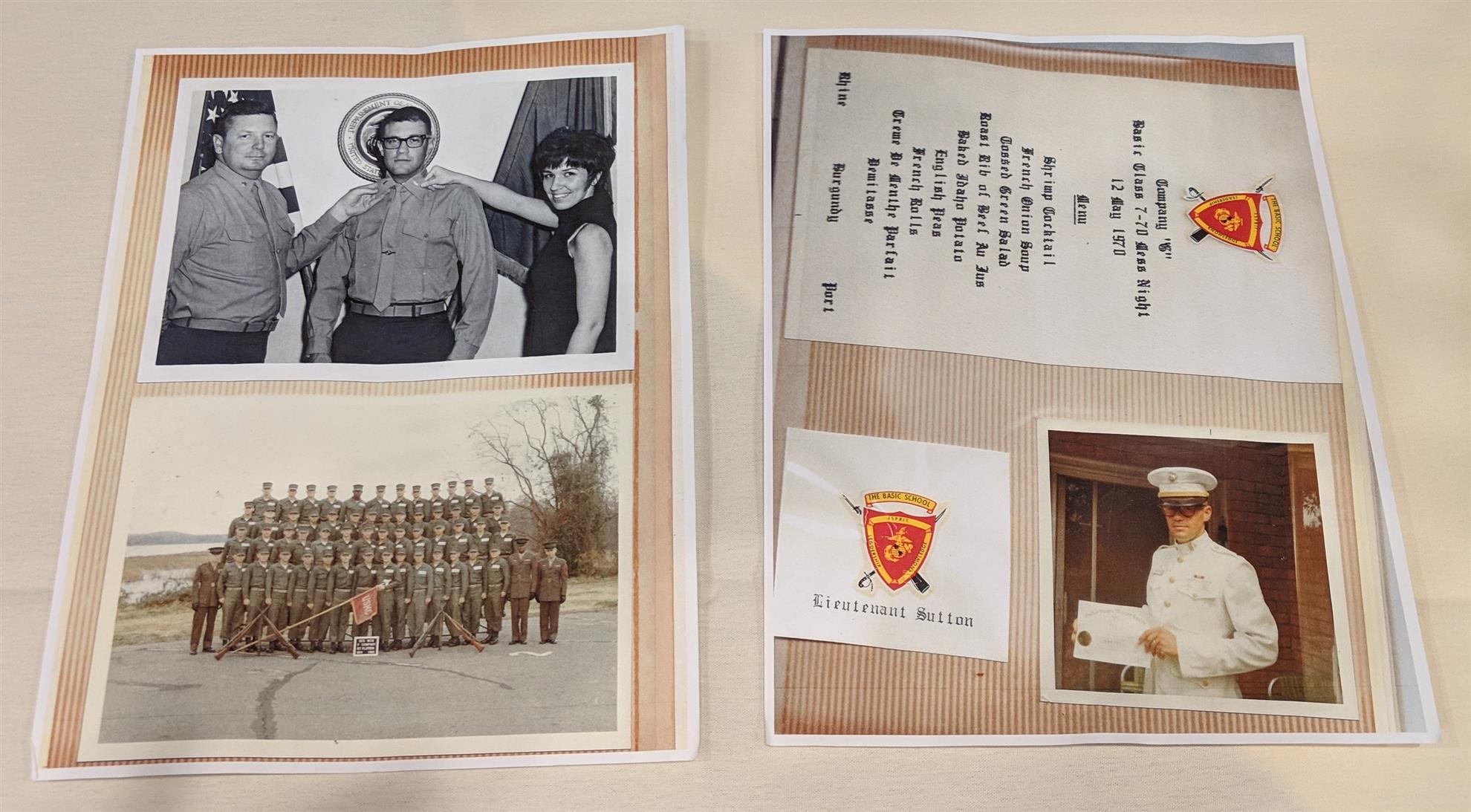
Bill Sutton said he moved 11 times during his career due to different postings and he was always moved by the POW/MIA table setup as it reminded him of the great heroes still missing in action.
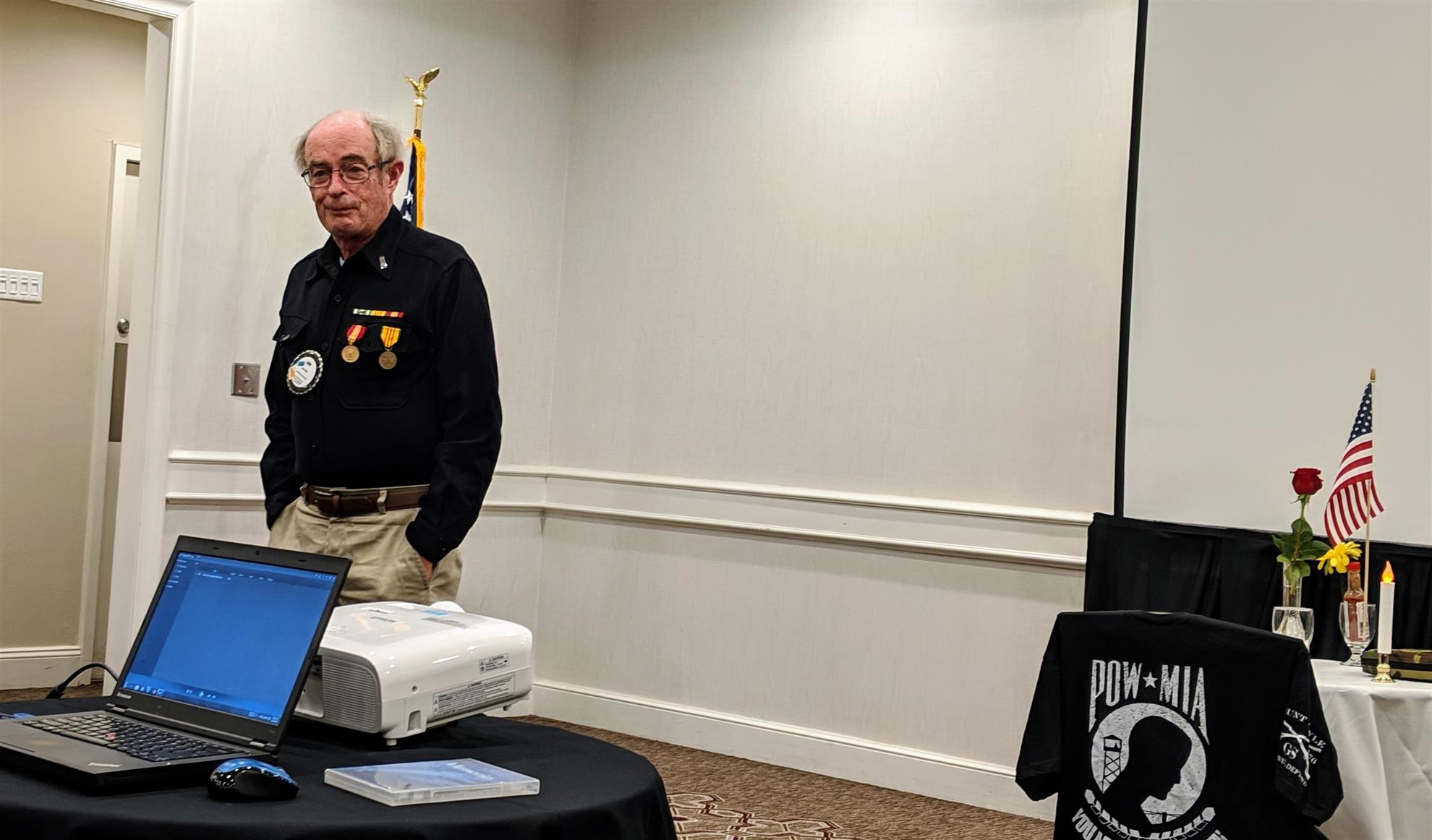
Jon Fish was on a cruise to the Mediterranean when he was posted at Charleston, his ship came back and it became a Reserve ship as it was declared to be unfit for the sea. His next ship trip was when he went to Mekong near Vietnam. He spent 2.5 years in the Navy.
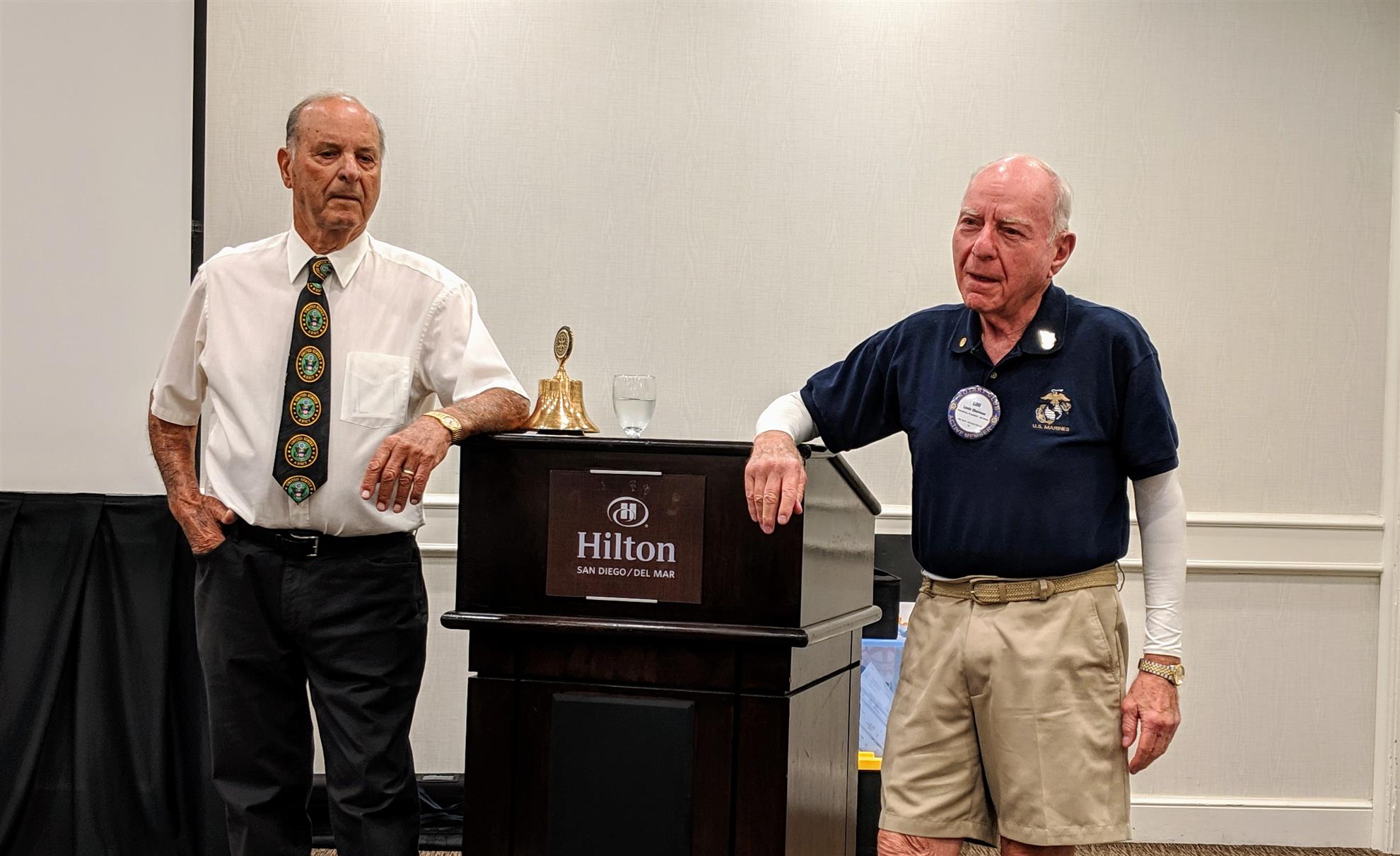
Lou Oberman was a World War II veteran. He was at Parris Island and trained marine pilots on the instruments used for flying. He trained them to fly blind even in bad weather. In such bad weather situations when there are multiple planes all heading back to land, he would stack them in concentric circles at 3,000, 4,000, 5000 feet so they could land safely.
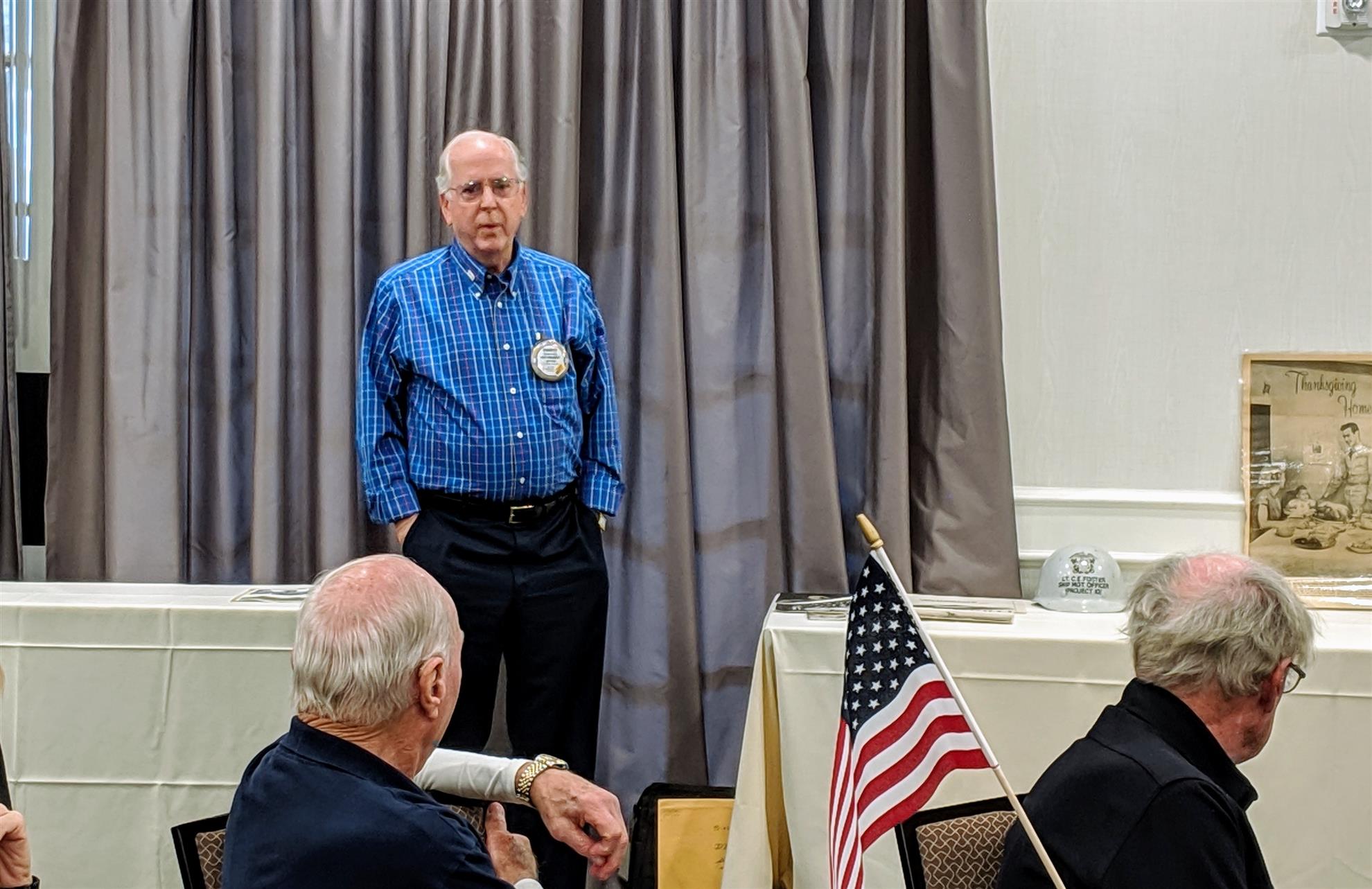


Charles Foster said that his father-in-law was in the Navy and his mother-in-law was in the Marines. He joined the Navy and was assigned as the Engineering Manager for the re-design of a Destroyer. Soon after he arrived at the Charleston Naval Shipyard, it failed an inspection of the calibration systems involved in its work on nuclear submarines. It had to be fixed within 60 days to avoid complete shutdown of the shipyard! The shipyard commander accepted Charles' team's recommendations and started its implementation in time to keep the shipyard’s nuclear submarine work from being shut down. The poster above was one of the ways they brought attention to those involved in the shipyard’s nuclear submarine work that uncalibrated tools and instruments could lead to failures of submarines while at sea and the resulting deaths of men aboard them.
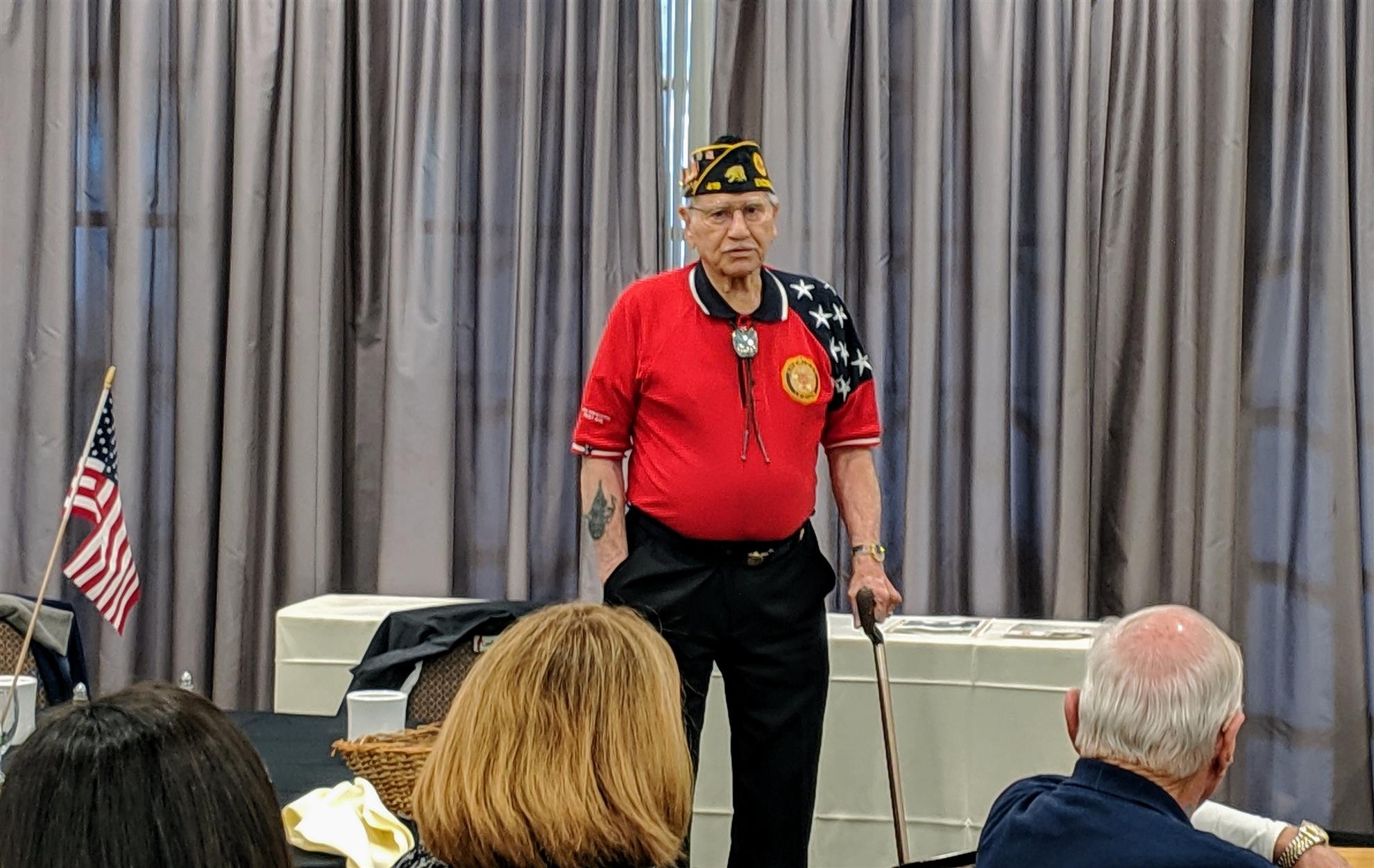
We also had one of George's World War II friend Arnold F. give a brief talk. He said he was on ship Arora and it was stuck in a big storm, lost all life-boats and they were trying to head back to shore. However, they got a message via "light" to go back to the sea to save 2 other ships that were stranded. They managed to save a few.


In the end, George read out some more stories and concluded with his legendary teddy bear song :-).
###
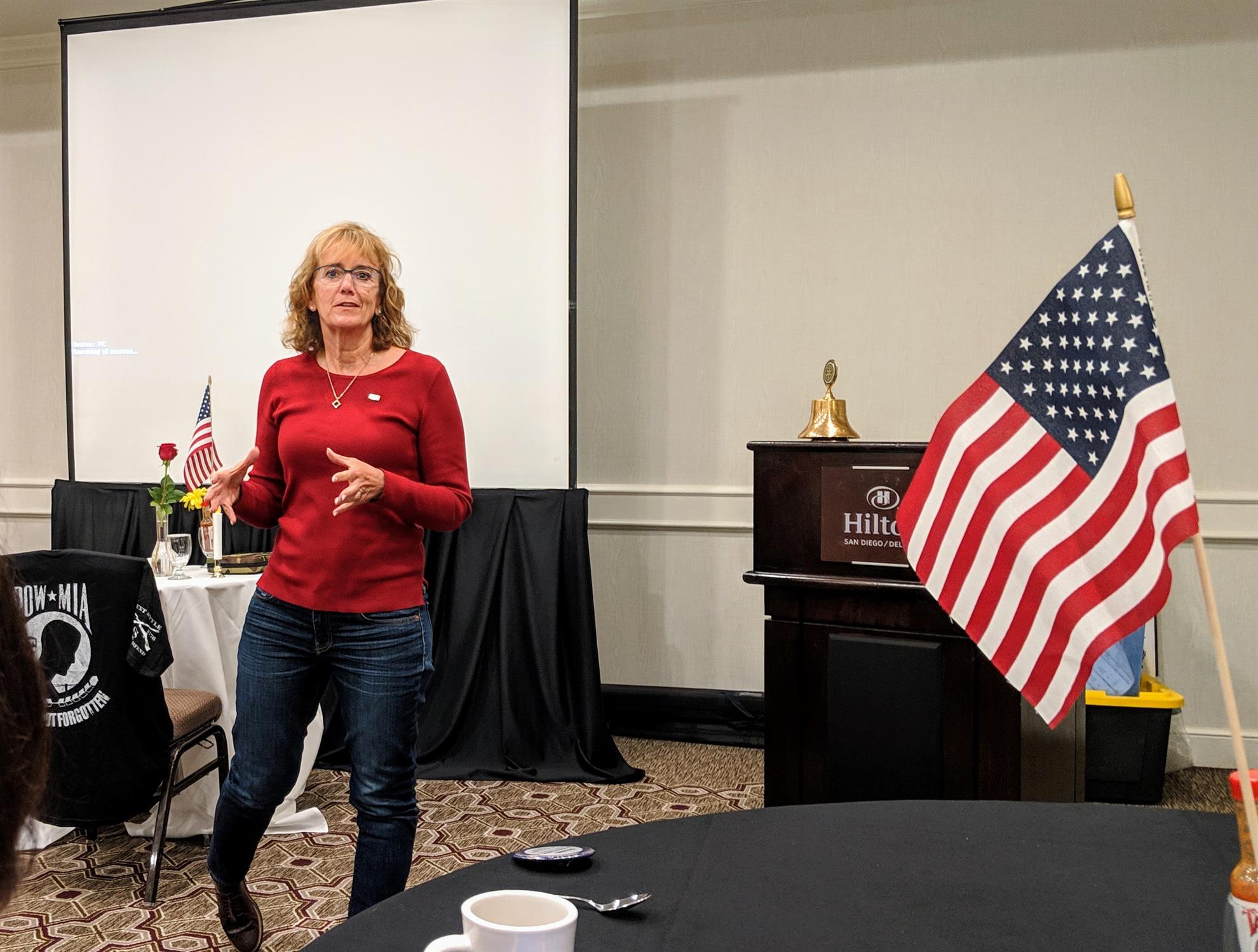
Susan Hennenfent's "My 3 Things in Life":
Before she was born her family was in Germany. Both her grand-parents were born in Russia. She could have been born in Russia, but her parents eventually moved to USA and so Susan feels blessed that she was born in the USA! She has some German blood in her.
She admired her Algebra teacher, who encouraged students to take Physics. So, later Susan took Physics in college and ended up getting her Electrical Engineering degree. She met and married Mark.
Finally, she said that joining Rotary was one of the best things in life.
A reference to a wonderful book came up in the discussion - "A Gentleman in Moscow".
========
